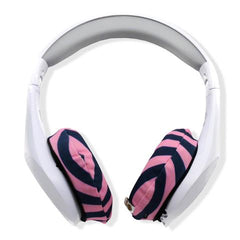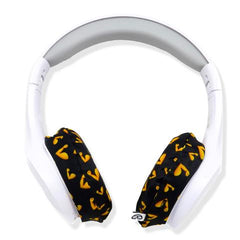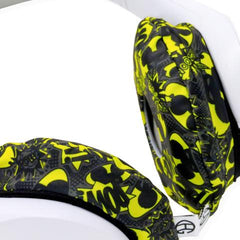Hot Workouts: Do They Work and Are They Safe?

For cardio, pilates and weight training, the International Fitness Association recommends a gym temperature of between 65 and 68 degrees Fahrenheit. For yoga, it should be ‘somewhat warmer but no higher than eighty degrees.’ Humidity should range from 40 to 60 degrees Fahrenheit.
It all sounds very reasonable, doesn’t it?
It makes sense to keep a gym cool.
We all know how tough exercising in a hot environment can be but what about classes that encourage working out in high temperatures?
Hot yoga is probably what first comes to mind. It’s had a ringing endorsement in recent years from celebrities like Gwyneth Paltrow, Gwen Stefani, Steven Tyler, Madonna and Lady Gaga. Although, the practice isn’t that new at all. Back in the 1970s, Bikram Choudhury developed a style based on the Hathi yoga system. In Bikram Yoga, yogis work through a single set of 26 poses in studios heated to 105 degrees Fahrenheit.
We’re guessing that hot yoga sounds well...hotter than sweaty yoga but that’s entirely its point: to sweat.
And it’s not just yoga that’s heating up. Hot cardio is a thing. You can take a hot spinning class or start hot boxing. You can sweat through a hot HIIT session, too. There's hot pilates and hot barre… you can take any sport, take it indoors, turn up the temperature and start the latest fitness trend.
It can be big business for studios.
Celebrities LOVE to hang out at the hot spin classes at Sweat Shoppe in California where the temperature is set to a balmy 80 to 84 degrees. Closer to home, you can do Hip Hop Yoga at One Ldn where the studio is ramped up to 95 degrees Fahrenheit and is described as being for people who ‘don’t do yoga’. For Hot HIIT training in Oxford, you can get your cardio and strength in whilst experiencing maximum broil.
We’re not knocking it. Whatever gets you into the gym and keeps pulling you back in is what counts BUT the practice isn’t without some issues.
Hot workouts may be popular but can they really deliver a better workout and are they safe?

If you’re pregnant or if you suffer from high blood pressure, then keep away from heated studios.
Be careful if you suffer from any ailment or illness that might react badly to overheating. If in doubt, always speak to your doctor.
Hot Yoga versus Hot Cardio
Hot yoga has the benefit in that it doesn’t ramp up the body’s core temperature in the way that cardio does. Recent research by John Porcari, Ph.D., head of the department of exercise and sport science at the University of Wisconsin-LaCrosse, suggests that hot yoga in a studio heated between 90 and 95 degrees is probably fine so long as the humidity is no higher than 40% and only if you ‘stay properly hydrated whilst doing it’.
However, he goes on to explain to Women’s Health magazine that he’d be ‘very cautious’ about attempting a hot spin class in a gym where temperatures were above 95 degrees. So whilst hot yoga seems unlikely to cause any health issues, hot cardio could.
Watch for Humidity
Temperature is often how we gauge the weather outside the gym, and it’s probably how we gauge a hot class, too. We’re more interested in the 85 or 95 degrees that the room is heated to rather than how humid it is BUT humidity is what’s key.
Our bodies use sweat to help us cool down during exercise and it’s the process of the sweat evaporating that assists our body in regulating our temperature. On a mild or cool day, this system is highly effective.
Humidity can mess this process up.
Humidity is the amount of moisture in the air. In humid conditions (where the air is already filled with moisture) it’s harder for sweat to evaporate. We’re left with sweat on our skin and our body can’t cool us down. When this happens we can quickly overheat and suffer heat stroke.
In 2011, Reuters reported on figures released in the US by the Centre for Disease Control and Prevention which showed that nearly 6,000 people that year visited the hospital as a result of exercise-induced heat complaints.
Overheating is no joke.
Perception Vs Reality
In the same article Dr Cedric X. Bryant, Chief Science Officer of the American Council on Exercise remarked that physical performance is negatively impacted by high levels of humidity.
This is echoed in the results of John Porcari’s research. He suggests that it’s our perception of exertion during hot classes that make us feel as though we’ve worked out harder. The reality is that we’ve just tired out faster. As the body is busy trying to cool itself down, it's harder to maintain a high intensity and you may actually be performing worse.
Feeling the Calorie Burn
Brian Tracy, Ph.D., associate professor of health and exercise science at Colorado State University says that whilst hot yoga may burn more calories, the number is only going to be marginally more. In the same post, Self magazine reported on a study which found that Bikram yoga only burned 35 more calories per hour than those exercising at room temperature. In a spin class, this tallies with Dr Porcari’s research: if you’re tiring more quickly, then there's going to be a reduced calorie burn.
The Detox Myth

Many of the proponents of hot workouts will talk about its ‘detoxifying’ effects. This should be taken with a grain of salt. Kinesiology Professor Douglas Casa told the NY Times that the detox argument was ‘a hoax’, remarking that ‘there was no inherent advantage to sweating more. Certainly, the myth of ‘detoxing’ the body is one that’s heavily suggested in the health and fitness industry. Our body has the ability to detox us proficiently. If this process somehow stopped working, then you’d be more likely to need emergency hospitalisation than a sweaty gym class or a flavoured tea bag.
One thing that does happen when we sweat, though, is the body loses essential nutrients like salt and potassium, so don’t be sold on the ‘magic’ cleansing properties of sweating.
Flexibility
Whilst it’s generally accepted that exercising hot will increase flexibility, it’s difficult to say whether it makes you more or less susceptible to injury. A seasoned hot pro will understand the limitations of their own body, recognising the point at which a stretch or move could go too far. A beginner, however, might not understand this so well and, run the risk of tendon or ligament injury.
Your form can slip when you're tiring, too. You don’t want to pull anything that might force you out of the gym for the next few weeks.
Germs!
If you sweat a lot in the gym, then it’s common courtesy to wipe down the equipment when you’re done. In a hot class, everyone is going to be sweating A LOT. Your face will be sweating, your hands, your arms, and the saddle or the matt or the floor and the wall and EUGH!
It’s going to be moist in there people.
Maybe then you’ll touch your face, unscrew your water bottle, touch another person or have an instructor touch you. Maybe your feet are bare or there’s an unhealed cut on your toe or finger.
Okay, you get the picture.
Frighteningly, something like MRSA could probably live quite happily in a hot studio where people are close to one another, sometimes working in pairs, barefoot with thin clothing that can make skin-to-skin contact inevitable. Bikram Yoga, for instance, insists on using carpeted floors which are tougher to clean and which yogis get very close to.
Of course, you can get a cold or flu from anywhere. The gym isn’t the only place where we come into contact with sweaty or sick people BUT be mindful: wash your hands and your kit regularly and choose a studio that takes hygiene seriously.

We’re not bashing hot workouts.
Many, many people SWEAR by them, and if that’s what fires you up — great!
And whilst we’d agree with John Porcari’s research that there’s probably not a huge physical benefit to sweating profusely, there’s obviously a huge psychological benefit: it’s what gets these people into the classes regularly and getting people fit. For some, it’s the challenge. It’s going through hell that gives them a sense of achievement greater than a cooler class elsewhere.
If you think that it’s something that you’d like to try, then remember to hydrate efficiently before and during your practice. Listen to your body, and if you feel unwell then stop. Be careful, too, not to overexert yourself and ask your instructor for advice on improving posture without tearing up your tendons or ligaments. Find out what the temperature and humidity will be. Some gyms have an area for beginners that’s slightly cooler so that people can get a feel for the heat before they start really going for it.

Whether you decide to add a little heat to your workout or whether you’re keen to keep it cool, remember that sweat ruins headphones. Once moisture gets into the cushioning and the electronics, it’s game over, and it doesn’t matter whether their Beats or Bose. Make sure you add EarHugz to your headphones. These sweat-wicking headphone covers will prevent sweat damage allowing you to enjoy superior sound quality during your workout.



